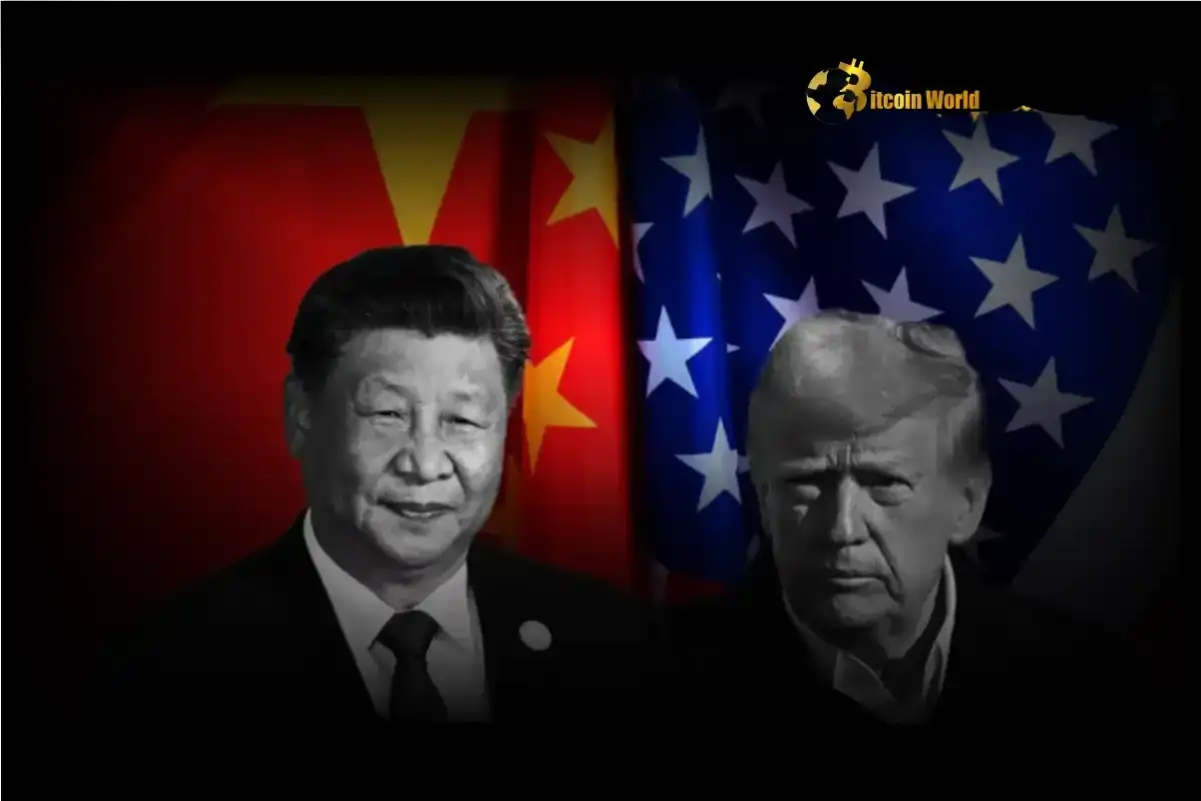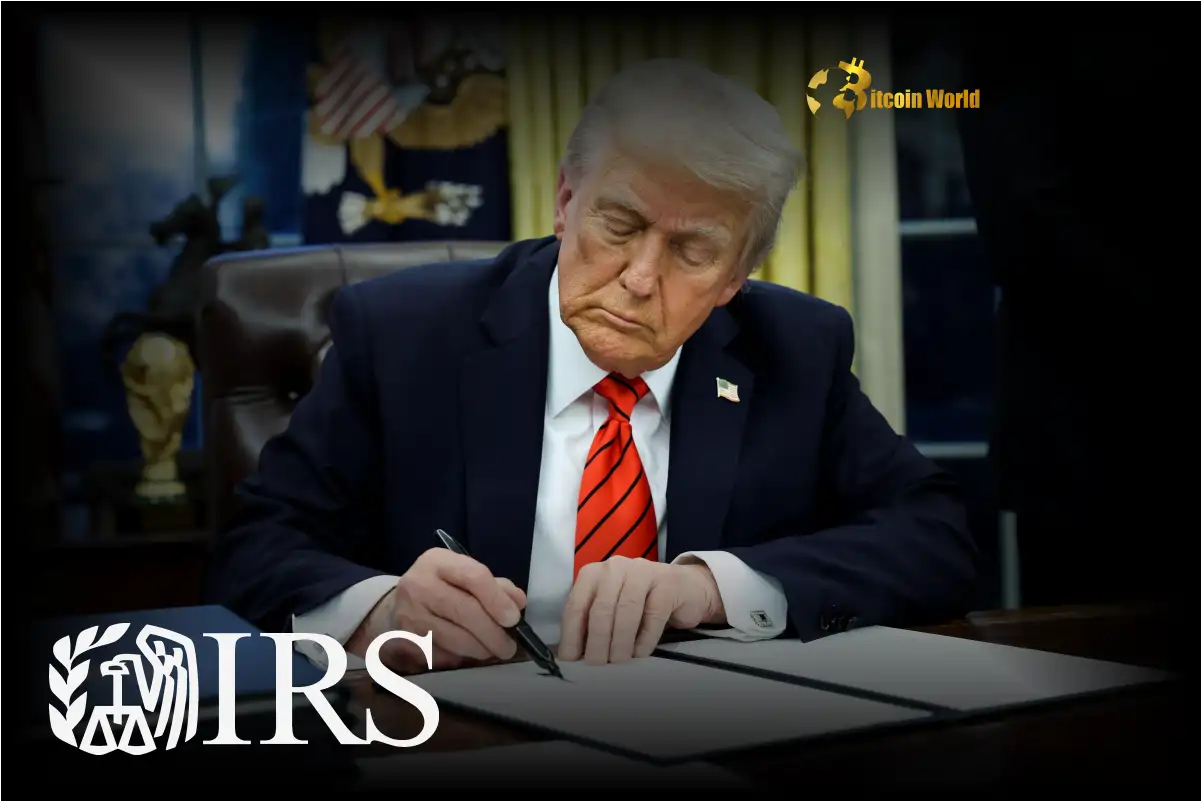Hold onto your hats, crypto enthusiasts! The world of traditional finance is sending shockwaves, and it’s all rippling into our digital domain. The mighty US dollar, a cornerstone of global trade, is experiencing a significant dollar slump. But what’s fueling this downturn, and more importantly, how does it connect to the volatile world of cryptocurrencies? Let’s dive into the brewing storm – the intensifying US-China trade war.
What’s Behind the Dollar Slump? Unpacking the US-China Trade War Impact
The ongoing trade dispute between the United States and China isn’t just headlines; it’s a major economic earthquake. Think of it like this: two global giants, locked in a battle of tariffs and trade restrictions. This friction is creating ripples across the financial landscape, and one of the most visible effects is the weakening of the US dollar.
Here’s a breakdown of how the US-China trade war is contributing to the dollar slump:
- Increased Uncertainty: Trade wars breed uncertainty. Businesses become hesitant to invest, supply chains are disrupted, and future economic growth becomes cloudy. This uncertainty makes investors wary of holding dollar-denominated assets, leading to a decrease in demand for the dollar.
- Reduced Exports: Tariffs imposed by both sides in the trade war make goods more expensive. When US exports become pricier due to retaliatory tariffs from China, demand for these goods decreases. This, in turn, can weaken the dollar as there’s less international demand for it to purchase US goods.
- Safe-Haven Currencies Gain: In times of economic uncertainty, investors often flock to safe-haven assets. While the dollar is traditionally considered a safe haven, the trade war itself is partly originating from the US, diluting its safe-haven appeal. This pushes investors towards other currencies or assets, further contributing to the dollar slump.
- Potential for Currency Devaluation: In extreme scenarios, countries might consider currency devaluation to make their exports cheaper and more competitive. While the US hasn’t explicitly signaled this, the trade war tensions raise concerns about potential currency manipulations, adding downward pressure on the dollar.
Currency Devaluation: A Double-Edged Sword?
Currency devaluation, essentially a deliberate lowering of a currency’s value, is a tool countries sometimes use to boost their economies. But is it always beneficial? Let’s weigh the pros and cons:
| Benefits of Currency Devaluation | Challenges of Currency Devaluation |
|---|---|
|
|
For the US, deliberate currency devaluation is a complex issue with significant political and economic ramifications. However, the market forces driven by the US-China trade war are already pushing the dollar downwards.
Impact on the Global Economy: Are We Heading for a Downturn?
The dollar slump and the US-China trade war are not isolated events. They have far-reaching consequences for the global economy. Here’s how:
- Slower Global Growth: Trade disputes disrupt global supply chains, reduce business confidence, and dampen investment, all contributing to slower global economic growth.
- Emerging Markets Vulnerability: Many emerging market economies rely on dollar-denominated debt. A stronger dollar (though currently we see a dollar slump) makes this debt more expensive to service. However, a sudden dollar slump can also cause instability if it leads to capital flight or rapid currency fluctuations in these markets.
- Commodity Price Fluctuations: Commodities are often priced in dollars. A weaker dollar can lead to higher commodity prices, potentially contributing to inflation globally.
- Increased Market Volatility: Uncertainty surrounding trade and currency valuations leads to increased volatility in financial markets, impacting stocks, bonds, and yes, even cryptocurrencies.
Financial Markets and Crypto: Riding the Wave of Dollar Volatility
So, how does all this relate to the crypto world? Cryptocurrencies, particularly Bitcoin, are often touted as alternative assets, a hedge against traditional financial markets and fiat currency instability. When the dollar weakens, and traditional markets experience jitters, investors often look for alternatives.
Here’s the potential connection to crypto:
- Increased Crypto Appeal: A dollar slump and volatility in traditional markets can make cryptocurrencies appear more attractive as alternative stores of value or investment vehicles.
- Inflation Hedge Narrative: If the dollar slump leads to inflation, cryptocurrencies like Bitcoin, with their limited supply, could be seen as a hedge against inflation, further driving demand.
- Market Diversification: Crypto offers diversification away from traditional assets tied to the dollar and the global economy. In times of uncertainty, diversification is key.
Actionable Insights: Navigating the Dollar Slump and Trade War Turbulence
What can you do to navigate these turbulent times?
- Stay Informed: Keep a close watch on developments in the US-China trade war and their impact on the dollar and the global economy.
- Diversify Your Portfolio: Consider diversifying your investments across different asset classes, including cryptocurrencies, to mitigate risk.
- Manage Risk: Volatility is likely to remain elevated. Implement robust risk management strategies in your trading and investment activities.
- Long-Term Perspective: Focus on the long-term potential of your investments and avoid making impulsive decisions based on short-term market fluctuations.
Conclusion: Uncertainty and Opportunity in a Shifting Global Landscape
The dollar slump, fueled by the intensifying US-China trade war, paints a picture of uncertainty in the global economy. While this situation presents challenges, it also unveils potential opportunities. For the cryptocurrency space, it could be a moment to shine, showcasing its potential as an alternative asset in a world grappling with traditional financial market volatility. Staying informed, adapting to the changing landscape, and maintaining a balanced perspective are crucial as we navigate these complex economic currents.
To learn more about the latest Forex market trends, explore our articles on key developments shaping US Dollar liquidity.
[ad_2]
Source link






